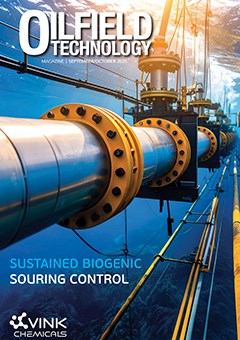Editorial comment
In 1896, Eunice Foot identified that increasing CO2 could warm the Earth’s climate. In 1896, Svante Arrhenius calculated the potential warming from CO2 emissions created by mankind. And in 1938, Guy Callendar presented evidence to link fossil-fuel driven CO2 emissions with the rising temperature of the Earth. It was not until the 1980s that this discussion entered the political arena – and now, net zero is one of the most heavily debated topics among scientists, politicians, and industry professionals alike.
Register for free »
Get started now for absolutely FREE, no credit card required.
The Intergovernmental Panel on Climate Change (IPCC) was formed in 1988, with the purpose of providing policymakers with regular scientific assessments on climate change, its implications, and potential future risks, as well as to put forward adaptation and mitigation options.1 For the oil and gas sector, this would represent a slow but not insignificant turn in the trajectory of the industry. Initially, it was a subtle recognition that burning of fossil fuels increased greenhouse gas (GHG) emissions. This led into greater policy pressure and regulatory risk culminating in climate agreements such as the 2015 Paris Agreement. The sector was facing greater restrictions and public/investor scrutiny was on the rise as a result. Despite some scepticism, climate concerns were not to be downplayed. The experimentation with renewables conducted by oil majors such as Shell and bp was certainly evidence for change. It was the cumulative weight of the IPCC that lead to major players adopting the net-zero pledges that we see in action today.
The pledge for net zero – whether it be by 2030, 2050, or beyond – is certainly at the forefront of development within the oil and gas industry at the moment. Wasteful industry operations in the oil and gas sector contributed to nearly 80 million t of methane leaked in 2023.2 The IEA’s Global Tracker report noted that the fossil fuel sector accounts for approximately 85% of the global methane emissions from human activity. Upstream sources include all emissions from production, gathering, and processing at both onshore and offshore facilities. As a result of this, countries have developed policies and regulations as a form of mitigation. This includes national cap-and-trade systems (Canada), policies that promote decarbonisation and minimisation of flaring/routine flaring operations (Brazil), and regulations that introduce mandatory requirements for emissions at source level (EU) – all with the aim to minimise methane emissions.3
To combat this growing issue, there has been a drive for new, innovative methods to decrease methane emissions. Notable is the collaboration between ExxonMobil Corp. and GHGSat, to monitor and mitigate methane at scale across ExxonMobil’s onshore operations in North America and Asia, including the US, Canada, Papua New Guinea, and Indonesia. This form of satellite-based emissions monitoring helps pinpoint the source of methane leaks. Other popular methods being utilised include drone-based sensors like those utilised by Equinor on the Norwegian Continental Shelf, and Saudi Aramco’s utilisation of AI-enabled leak detection using mobile sensors on pipelines in the Middle East.
This issue of Oilfield Technology has a regional report from ATPI on supporting the oil and gas workforce in the Middle East, as well as features on Digitalisation and Automation, Decommissioning and Asset Retirement, Production Monitoring, and much more!
- IPCC
- The Oil and Gas Sector is Leaking Methane – RMI
- IEA: Upstream Operations and Methane Emissions – SAFETY4SEA


